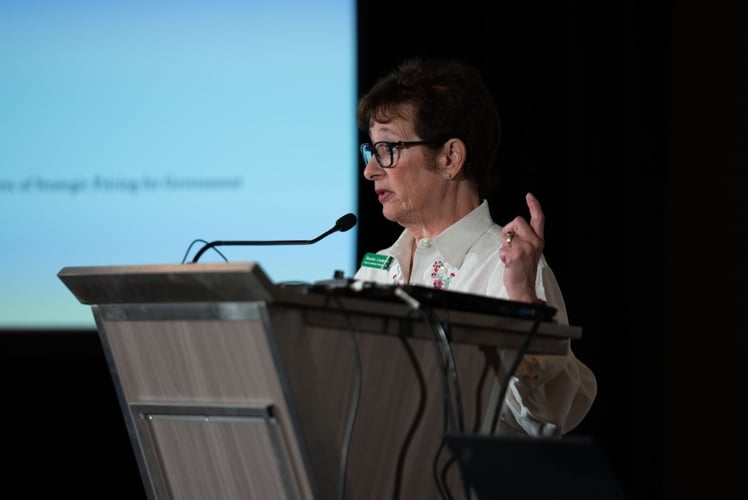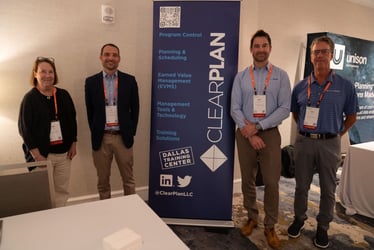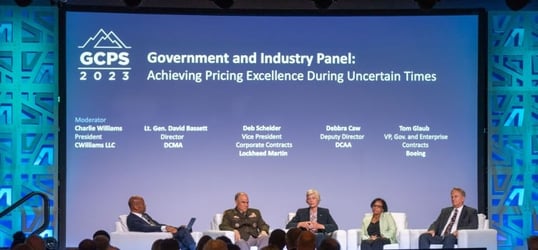In the competitive world of government contracting, winning more business is always a common goal for all contrators. But is the approach of bidding on every opportunity the most effective way to achieve success? In this excerpt from a breakout session at the 2023 GCP Summit, Marsha Lindquist, President of Granite Leadership Strategies, brings a fresh perspective to the table, suggesting that a more focused and strategic approach to pricing and bidding can lead to better results. Here are some of Marsha’s key takeaways from her thought-provoking presentation:
Understanding the Current Landscape:
- In a survey of over 126 corporations, over 50% reported a win rate of 30% or less. Most of those companies suggest a 30% win rate is a reasonable benchmark for success.
- Many organizations lack a well-defined pricing strategy, often considering pricing as an afterthought in the proposal process.
Strategizing Your Pricing:
- Marsha advocates aligning your pricing strategy with your capture strategy from the outset.
- Only about half of the surveyed companies reported having a dedicated pricing strategy in place.
- Early pricing involvement is critical for success. It includes activities such as price-to-win assessments, understanding efficiency gains, initial pricing modeling, and analyzing indirect rates.
Price-to-Win and Competitive Assessment:
- Price-to-win activities focus on gathering external intelligence, including information about incumbents and competitors, to determine the feasibility of pursuing a contract.
- Competitive assessments help organizations understand customer requirements, strengths, weaknesses, and potential competitor solutions.
- The key is to gather competitive data legally and use it to inform your bidding decisions.
The Strategic Approach:
- Most surveyed companies plan to intensify their business development efforts in 2023, focusing on high-probability-of-winning (P-win > 40%) contracts.
- Marsha emphasized the importance of bidding fewer contracts but with a more focused approach.
- Pursuing opportunities that align with your core strengths and have a high P-win can lead to superior performance, better CPARs (Contractor Performance Assessment Report), and repeat business.
The Long Game:
- A long-term financial strategy should be in sync with each opportunity, ensuring that the contracts you pursue fit within the broader business plan.
- Developing a well-charted business development plan helps keep the pipeline organized and manageable.
Honest Probability of Winning:
- Marsha highlighted the need for honesty in assessing the probability of winning (P-win) for each bid.
- Avoid the temptation to overstate P-win just to appease leadership.
- P-win should be an accurate reflection of your chances of success.
Reducing B&P Costs:
- Focusing on high-probability-of-winning contracts reduces wear and tear on business development resources.
- Less wear and tear leads to more sustainable business development efforts.
- It also keeps your valuable employees happy and engaged.
Opting for Best Pricing:
- A focused approach on high-P-win contracts allows you to concentrate your pre-RFP attention and conduct early pricing activities.
- Pricing reviews should be conducted at various stages of the proposal process to avoid last-minute surprises.
- Collaborate with your competitive teammates to align pricing strategies early.
The Winning Formula:
- Marsha's survey revealed that the top-performing companies consistently adopted early pricing, focused approaches, internal modeling, internal reviews, price-to-win assessments, and competitive teammate pricing.
Rethinking Strategic Pricing:
- Emphasizes the need to start pricing early to be competitive, focusing on higher probability of win opportunities, having repeatable pricing processes, and engaging in conversations with customers.
- Advocates for the inclusion of a pricing executive summary that highlights the value proposition in proposals. Some organizations use various tools to impact their G&A, such as new indirect pools, corporate concessions, and investments. It encourages organizations to challenge their mindsets and apply probability to bid decisions.
- Emphasizes that improving pricing strategies can increase profits. Statistics from the Dell Tech Clarity 2023 Government Contracting Industry Study, highlight the challenges in government contracting, the importance of opportunity identification, and the potential for profit improvement through pricing strategies.
- Answers questions about bid-no-bid strategies and balancing low P-win opportunities.
Conclusion:
The traditional approach of bidding on as many contracts as possible doesn't guarantee success. Instead, government contractors were urged to bid selectively, focusing on opportunities that align with their strengths and have a high probability of winning. By implementing early pricing activities, price-to-win assessments, and maintaining honesty in P-win assessments, organizations can set themselves up for long-term success in the government contracting arena. A strategic approach not only improves win rates but also contributes to long-term profitability and sustainability, making it a worthwhile investment for any government contractor.
Thinking you wish you were in this session so you could have engaged with Marsha to give her a different perspective from your real-world experience? Don’t make the same mistake next year! Save the date and start making plans to join the discussion at the 2024 GCP Summit in San Diego, CA.
.png?width=100&height=100&name=GCP%20Summit%20DSP%20Content%20(7).png)




